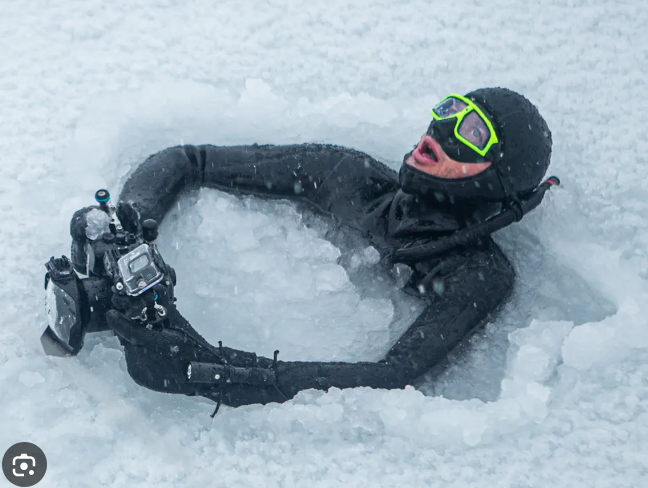To say the images of Andreas B. Heide during his working day are dramatic is an understatement: a freediver deep underwater in a black wetsuit, his lean silhouette enhanced by powerful bladed fins, looking up towards a group of orcas; or standing on an ice sheet next to a small sailboat in the Arctic, amid a sea full of dangerous looking ice floes in poor visibility.
But for the marine biologist and adventurer, plunging into freezing waters with orcas or embarking on a 4,500-mile sailing expedition from the Arctic north to the UK and back, documenting whale behaviour and their dramatic encounters with polar bears, whales and walruses, is all part and parcel of storytelling that he hopes can ultimately change human behaviour. He works with scientists and conservationists, photographers and drone pilots, to underline the importance of conservation in the extreme north, under challenging conditions.
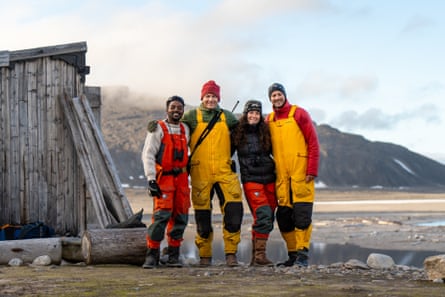
“There is a question we all ask ourselves, as environmentalists and journalists, which is, why, when as humans we are aware of climate change and plastic pollution, do we fail to act collectively to do something about it?” says B. Heide. “Part of that reason is a lack of knowledge.
“Imagine a photo of the moon from the moon’s surface. But then, imagine the moon’s surface with an astronaut on it, it’s completely different. It has an emotional response. That’s what we want to convey.”

B. Heide, 44, is one of eight people to be nominated for the Shackleton medal for the protection of the polar regions, which recognises individuals putting everything on the line to protect the Arctic and the Antarctic. The winner of the award, judged by the explorer Sir Ranulph Fiennes and the historian and presenter Dan Snow, among others, will be announced on 10 May.
The larger an animal is, the more you connect with it. That’s human psychology
Andreas B.Heide
Born in the Norwegian coastal town of Stavanger, B. Heide spent his childhood close to the water. He began freediving at the age of 10, and had his first boat at eight or nine. He spent two years in the military as a parachutist, working with helicopters and submarines, to build up the skills needed to navigate the Arctic.

He says he wants to share knowledge and create an emotional connection with the marine environment. “To make people understand what they do matters for the Arctic ecosystem, including the polar bears and the blue whales and the orcas.”
He works with whales, he says, because they are the “ultimate ambassador for the ocean and spark an emotional connection among people”. “The larger an animal is, the more you connect with it. That’s human psychology.”
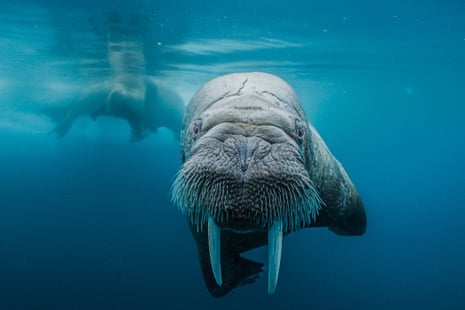
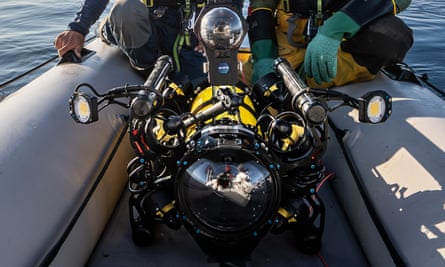
He accepts that being freezing cold is part of his job, however painful. “Sometimes when I come to the surface, I struggle to speak because my lips are numb with the cold. I use a wetsuit often, because it is faster in the water. Speed is everything if you want to keep up with a whale. But sometimes we use drysuits which allow you to stay down for longer – you can stay in the water for half an hour with a drysuit.”
Heide believes his method of navigating the often treacherous Arctic conditions in a small sailing boat, Barba, helps him better connect with nature and people.
“If we were there in a €5m [£4.3m] state-of-the-art expedition vessel, it would be less impactful. In a small boat, you have to connect with nature and your life is governed by nature. You get sea spray in your face.
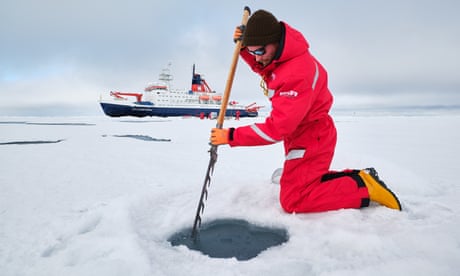
“Ernest Shackleton and his crew were out pushing the boundaries with the means they had at their disposal, with an adventurous spirit and a willingness to explore.”



